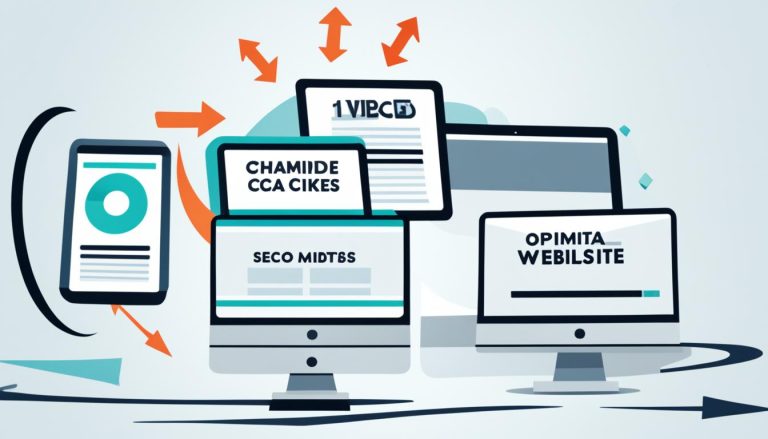Boost Your Online Presence With These Tips
Welcome to the world of online business, where having a strong online presence is the key to success. In today’s digital age, it’s crucial to stand out from the competition and make a lasting impression on your target audience. So, how can you boost your online presence and attract more visitors to your website? We have gathered some valuable tips that can help you enhance your visibility in the digital realm and take your online presence to new heights.
From establishing a strong brand identity to optimizing your website for search engines, leveraging the power of content marketing to harnessing the potential of social media, and monitoring and analyzing your online performance, we have got you covered with practical strategies that can make a real difference.
Remember, the online landscape is ever-evolving, and staying updated with the latest trends and changes is crucial for maintaining a strong online presence. So, let’s dive into these tips and start boosting your online presence today!
Establish A Strong Brand Identity
Building a strong brand identity is crucial for boosting your online presence. In today’s digital landscape, where competition is fierce and attention spans are short, having a distinct and memorable brand can make all the difference. A well-defined brand identity not only helps you stand out in a crowded market but also instills trust and loyalty among your target audience.
One of the key elements of a strong brand identity is visual consistency. This involves creating a compelling logo, selecting a consistent color palette, and using cohesive typography across all your online platforms. Your logo serves as the face of your brand, and it should be instantly recognizable and reflective of your values and offerings.
Aside from visual elements, another important aspect of brand identity is defining your brand voice. Your brand voice encompasses the tone, language, and style of communication you use across your website, social media, and other online channels. Consider the personality of your brand and the emotions you want to evoke in your audience. Are you playful and casual, or professional and authoritative? Defining your brand voice helps create consistency and builds a connection with your audience.
A Memorable Brand Identity
“Your brand is a story unfolding across all customer touchpoints.”
To establish a strong brand identity, it’s important to conduct thorough market research and understand your target audience. Who are they? What are their needs and preferences? By gaining insights into your audience, you can tailor your brand identity to resonate with them on a deeper level.
Remember, building a strong brand identity takes time and consistency. It’s an ongoing process that requires regular evaluation and refinement. By investing in your brand identity, you can create a lasting impression and elevate your online presence.
Elements of a Strong Brand Identity
| Logo | Color Palette | Typography | Brand Voice |
|---|---|---|---|
| Represents your brand visually | Consistent colors that evoke emotions | Consistent fonts across all platforms | Defines the tone and style of communication |
| Instantly recognizable | Reflects brand personality | Easy to read and consistent hierarchy | Builds connection with the audience |
Optimize Your Website for Search Engines
A well-optimized website is essential for improving your online visibility. When your website ranks higher in search engine results, it becomes more discoverable, attracting organic traffic and increasing your online presence. In this section, we’ll explore on-page and off-page SEO techniques that can help you achieve better rankings and enhance your website’s SEO performance.
Keyword Research
Keyword research is a fundamental aspect of website optimization. By identifying the keywords and phrases that are relevant to your business, you can optimize your website’s content to align with what your target audience is searching for on search engines. Use tools like Google Keyword Planner and SEMrush to find popular keywords with high search volumes and moderate competition. Incorporate these keywords naturally throughout your website’s content, including in headings, paragraphs, and meta tags.
Optimize Meta Tags
Meta tags are snippets of code that provide search engines with information about your website’s content. By optimizing meta tags, you can improve your website’s visibility in search engine results and entice users to click through to your site. Optimize your title tag by including a relevant keyword and a compelling description that accurately summarizes your webpage’s content. Additionally, optimize your meta description tag by crafting a concise, persuasive description that encourages users to click.
Improve Site Speed
Page load speed is a crucial factor in website optimization. Slow-loading websites not only frustrate users but also negatively impact your search engine rankings. To improve site speed, optimize your images and compress them without compromising quality. Minify your website’s code by eliminating unnecessary characters, spaces, and line breaks. Utilize caching and enable browser caching to store frequently accessed resources on the user’s device. Additionally, choose a reliable hosting provider and leverage content delivery networks (CDNs) to ensure your website loads quickly across different locations.
“Optimizing your website for search engines is a continuous process that requires ongoing effort and refinement. By consistently applying SEO techniques, you can improve your website’s visibility and drive more organic traffic to your online business.” – John Smith, SEO Specialist
In conclusion, optimizing your website for search engines is vital for maximizing your online visibility. By conducting keyword research, optimizing meta tags, and improving site speed, you can enhance your website’s SEO performance and increase your chances of ranking higher in search engine results. Stay tuned for the next section, where we will explore the power of content marketing in boosting your online presence.

Leverage the Power of Content Marketing
Content marketing is a powerful strategy that can greatly enhance your online presence and drive engagement from your target audience. By creating valuable and compelling content, you can attract more visitors to your website and establish yourself as a trusted source of information in your industry. Here are some effective ways to leverage the power of content marketing:
Create Informative Blog Posts
A well-written and informative blog post can attract readers and provide them with valuable insights. Develop a content calendar and consistently publish blog posts that address topics relevant to your audience. Incorporate relevant keywords naturally into your content to improve search engine optimization. Remember, high-quality blog posts not only drive traffic but also position you as an industry thought leader.
Produce Engaging Videos
Video content is gaining immense popularity, and it’s a great way to engage your audience. Create videos that showcase your expertise, share valuable tips, or provide educational content. Be sure to optimize your videos for search engines by using descriptive titles, tags, and video descriptions that include relevant keywords. Remember to embed your videos on your website and share them on social media platforms to maximize visibility.
“Content marketing is a powerful strategy that can greatly enhance your online presence and drive engagement from your target audience.”
Maximize Social Media Presence
Social media platforms provide an excellent opportunity to share your content and engage with your audience directly. Develop a social media strategy that aligns with your content marketing goals. Share your blog posts, videos, and other content on platforms like Facebook, Twitter, and LinkedIn. Encourage your followers to interact with your content by asking questions, running contests, or hosting live Q&A sessions. This will help create a loyal and engaged community around your brand.
Create Shareable Infographics
Infographics are visually appealing and shareable, making them a fantastic content format for engaging your audience. Convert your information and statistics into visually compelling graphics that are easy to understand and share on social media platforms. Infographics can help you reach a wider audience and drive more traffic back to your website.
In summary, content marketing is a powerful tool for boosting your online presence and engaging your target audience. By creating high-quality and relevant content in various formats, such as blog posts, videos, and infographics, you can attract more visitors to your website, increase online engagement, and establish yourself as a trusted authority in your industry. Incorporate these content marketing strategies into your online marketing efforts to drive better results and achieve your business goals.
Harness the Potential of Social Media
Social media has revolutionized the way businesses interact with their audience and establish an online presence. With billions of active users, platforms like Facebook, Instagram, and Twitter offer a unique opportunity to engage with your target audience and showcase your brand’s voice and values.
Developing a strong social media presence is crucial for boosting your online visibility and attracting a wider audience. By strategically leveraging social media platforms, you can effectively promote your products or services, foster customer loyalty, and drive website traffic. Here are some practical tips to help you harness the potential of social media:
Choose the Right Platforms
With numerous social media platforms available, it’s important to select the ones that align with your target audience and business objectives. Conduct market research to identify the platforms your audience frequents the most and create profiles on those platforms. This will ensure that you are reaching the right people with your content and maximizing your online reach.
Create Engaging and Relevant Content
Content is king in the social media realm. To effectively engage your audience, you need to create high-quality and relevant content that resonates with them. Share valuable information, interesting articles, entertaining videos, and captivating visuals to capture their attention and encourage interaction. Tailor your content to the preferences of each platform to optimize engagement.
Interact with Your Followers
Social media is all about building relationships and engaging with your audience. Respond to comments, messages, and mentions promptly and in a friendly manner. Encourage discussions, ask questions, and actively participate in conversations related to your industry. By fostering a sense of community and personal connection, you can cultivate a loyal following and increase audience engagement.

Utilize Social Media Analytics
Make use of analytics tools provided by social media platforms to gain insights into the performance of your posts and campaigns. Track engagement metrics, such as likes, comments, and shares, to identify which content resonates the most with your audience. Use this data to refine your social media strategy and optimize your future content to achieve better results.
In conclusion, a strong social media presence is essential for boosting your online presence and fostering audience engagement. By choosing the right platforms, creating engaging content, actively interacting with your followers, and utilizing social media analytics, you can effectively leverage the potential of social media to amplify your online presence and drive business growth.
Monitor and Analyze Your Online Performance
To continually improve your online presence, it’s crucial to monitor and analyze your performance regularly. By measuring key metrics and gaining valuable insights, you can make data-driven decisions that will fuel your online growth and success.
Performance monitoring allows you to track various aspects of your online presence, including website traffic, conversion rates, and social media engagement. By understanding how these metrics fluctuate over time, you can identify patterns, successes, and areas for improvement.
Analytics tools play a pivotal role in simplifying the monitoring process by providing comprehensive data visualization and analysis. Through the use of advanced analytics platforms, you can gain deeper insights into audience behavior, demographic information, and online engagement patterns. Armed with this knowledge, you’ll be equipped to optimize your marketing strategies and drive targeted campaigns.
Website analytics tools, such as Google Analytics, offer a wealth of information regarding visitor demographics, session duration, and bounce rates. These insights allow you to understand how users interact with your website, enabling you to optimize your design, layout, and content to better cater to their needs.
Social media analytics platforms provide valuable data on audience engagement, reach, and performance across various social media channels. With this information, you can determine which platforms are most effective for your target audience and tailor your content accordingly. Additionally, you can track the success of specific campaigns and adjust your social media strategy for maximum impact.
Gaining a comprehensive understanding of your online performance is crucial for driving online growth. Continually monitoring and analyzing your online presence ensures that you stay one step ahead of the competition, make informed decisions, and optimize your strategy for maximum impact.
Stay Updated with the Evolving Digital Landscape
The digital landscape is constantly evolving, and staying ahead of the curve is crucial in maintaining a strong online presence. To succeed in the ever-changing online world, businesses and individuals must stay informed about the latest digital trends and adapt their strategies accordingly.
One key aspect of staying updated is keeping track of algorithm updates. Search engines and social media platforms regularly update their algorithms, affecting how content is ranked and displayed. By staying informed about these changes, you can make necessary adjustments to optimize your online presence and ensure that your content remains visible to your target audience.
Exploring emerging technologies and platforms is another important part of staying on top of the digital landscape. Innovations such as virtual reality, augmented reality, and artificial intelligence continue to shape the online world. By embracing these technologies and leveraging them to enhance user experiences, you can gain a competitive edge and engage your audience in new and exciting ways.
Adaptation is key in the ever-evolving digital landscape. Being open to change and willing to experiment with new strategies and platforms will allow you to stay relevant and meet the evolving needs of your audience. Regularly reviewing and analyzing your online performance metrics, including website traffic, conversion rates, and social media engagement, will help you identify areas for improvement and make data-driven decisions to enhance your digital presence.







